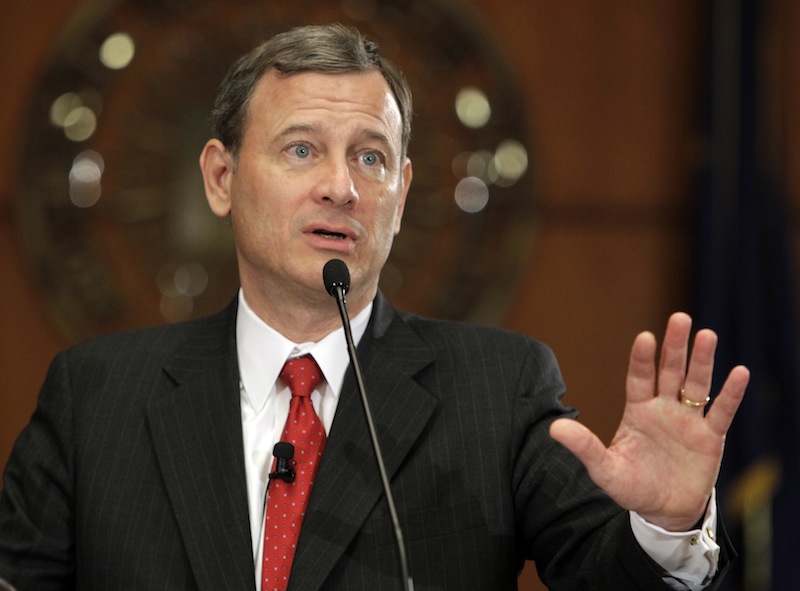Fights over the laws governing voting rights are nothing new – but 2014 is shaping up to be a big year for court decisions that will determine whether millions of Americans will face new and unnecessary barriers at the polls.
Since the disputed 2000 elections, states have increasingly moved to change voting rules, and litigation on these issues has more than doubled.
In June 2013, the United States Supreme Court decided in Shelby County v. Holder to strike down a key provision of the 1965 Voting Rights Act that had long required states with a history of discrimination to “pre-clear” proposed voting rule changes with the U.S. Department of Justice. Republican-led states have since redoubled efforts to restrict voting – and civil rights groups and the Justice Department have responded by filing new challenges. In 2014, the courts will weigh in, revealing what role, if any, U.S. judges will play in checking moves to make voting harder.
The federal government’s ability to stop potentially discriminatory voting changes before implementation has fundamentally changed since the Supreme Court chose to strike down Section 4 of the Voting Rights Act. After 1965, states and localities with a history of racial discrimination had to demonstrate that changes in voting laws would not make minority voters worse off at the polls. But the June 2013 Supreme Court decision said the law’s formula for determining which jurisdictions needed “pre-clearance” was no longer constitutional. Although the Court left open the possibility that Congress could enact a new formula, partisan gridlock in Washington and the Republican Party’s evident investment in new restrictions make Congressional action highly unlikely.
After pre-clearance was struck down, previously covered states wasted no time in enforcing previously suspended voting restrictions and enacting new ones. Texas immediately put in place voter identification rules that the Department of Justice had blocked for discriminatory impact. These rules tailor in obviously disparate ways the kinds of identification that can be used for voting. Student identification cards, for instance, are not allowed, but concealed weapons permits are just fine.
Under full Republican control, North Carolina recently enacted the strongest voting restrictions the country has seen since the 1960s. Among the many new restrictions are a strict new voter identification provision, a ban on same-day voter registration, restrictions on early voting days, and disenfranchisement of voters who cast ballots in the wrong precincts, even when poll workers are the ones responsible for errors.
Some local governments like the city of Pasadena, Texas, and the city of Augusta, Georgia are also making or considering changes likely to undercut minority clout at the polls.
Without the old pre-clearance provisions of the Voting Rights Act, the onus to stop or reverse restrictions now falls on civil rights lawyers who must file suits challenging each and every new legal impediment to easy registration or voting after it has already gone into effect. Time and resources are too limited to challenge every new state-imposed restriction, so all eyes are now focused on a few key lawsuits that will set crucial precedents.
The Department of Justice is pursuing challenges to the Texas voter identification law and to parts of North Carolina’s voting restrictions. These suits invoke Section 2 of the 1965 Voting Rights Act (a different provision than the provisions that were struck down). In addition, a challenge has been filed against a restrictive new voter ID law in Wisconsin, a northern state that never was subject to pre-clearance. These new Section 2 suits will be hard to win, because the burden is on the challengers to show that minority voters overall have fewer opportunities than white voters to elect candidates of their choice, a standard which courts have read to be a demanding one.
Further, the Justice Department is trying to have North Carolina and Texas again placed under continuous federal pre-clearance oversight, invoking Section 3 of the Voting Rights law, which requires proof that these states are currently engaged in intentional racial discrimination.
Given that legislators rarely announce racial motives in public, showing such intent will be difficult. Texas, for example is defending its new restrictions as motivated by bare-knuckle partisan politics, not race. They claim they just want to make it harder for likely Democrats to vote! If judges have to rule whether new restrictions are inspired by party politics or racial motives, it will be difficult to predict what they will say. But the impeding rulings will make a huge difference for minorities and younger Americans, whose voting rights are very much on the line. In the U.S. courts, 2014 will be a big year for voting rights.
Richard L. Hasen is Chancellor’s Professor of Law and Political Science of Law at the University of California, Irvine, creator of Election Law Blog, and a member of the Scholars Strategy Network.






